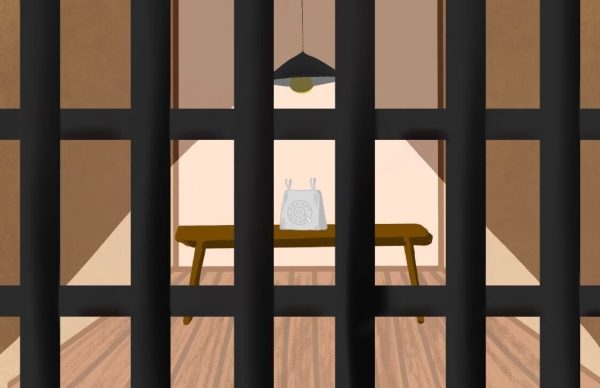Chance of potholes in I-35 corridor plan
Sunday, President John Bardo published an Op-Ed in the Wichita Eagle explaining the university’s I-35 corridor strategy to the city.
Essentially, the I-35 corridor strategy will grant in-state tuition to out-of-state students from Oklahoma, Texas, and Missouri.
The justification for this plan, as presented, is that it will attract students from such “regional hubs” as Oklahoma City, Tulsa, Dallas-Fort Worth and Kansas City, Mo., to Wichita for college, with the implication that “20 to 35 percent” will stay in the area after graduation “if jobs are available.”
This increase of college degrees in the area — especially in engineering, health care and business —will then “enhance the ability of south-central Kansas to compete in the global economy.”
Which sounds great.
This justification, of course, is necessary to present to every day Kansans, as this plan will essentially require taxpaying Kansans to subsidize the education of out-of-state students. If the plan works, it will no doubt improve the city.
But it is the opinion of The Sunflower that this plan, while well intended, might be a bumpy turn for the university and the city.
The Pros
Wichita State has recently seen a valley in enrollment. From Fall 2012 to Spring 2016, total student credit hours have decreased by almost 9 percent.
In that same timeframe, on-campus credit hours have decreased by 23 percent — 36,681 hours.
If students from Oklahoma, Texas and Kansas City, Mo., come to campus, they could help make up for the recent shortfall.
Increased enrollment means more tuition money coming into the university, which could empower the university to offer faculty raises and increase funding to departments who have been hurting under the recent circumstances.
These new students could fill the empty rooms at Shocker Hall and — possibly — live in the new student-housing option on Innovation Campus that is being studied by the university.
Out-of-state students would unquestionably fulfill one of the values set out in the Strategic Plan Initiative: “Diversity of culture, thought, and experience.”
“If Wichita State can regularly draw students from all along the I-35 corridor,” Bardo wrote, “both the university and the regional economy will benefit.”
The regional economy will benefit from “increasing workforce capacity” and the university will benefit from increased enrollment.
But all of these positive aspects operate on one primary assumption: that these students from out of state will actually step foot on Wichita State’s campus.
Possible Cons
The cost of tuition and fees across the country has skyrocketed with the availability of student loans. Between academic years 2006 to 2016, the cost of tuition and fees at Wichita State increased by 78 percent.
If it weren’t for off-campus options — including online classes — WSU would have missed out on more than $5 million of tuition money last spring.
While The Sunflower agrees with President Bardo that “tuition policy is an important component of WSU’s strategy to increase network linkages between Wichita and the nearby economic hubs,” it is of the utmost importance that tuition policy responsibly reflects an increase in value of education, rather than an increased need of the university.
The I-35 corridor will help address the increased need for students and tuition money for the university.
One possible threat to the increase of out-of-state students on campus is Wichita State’s increased online presence. Wichita State’s online program charges resident tuition rates — with increased student fees — to distance learners.
Wichita State began offering 100-percent online degrees in Fall 2014. That meant students, for the first time, could earn a degree from WSU without ever stepping foot on campus.
Last year, the university expanded its online degree options to 16 fully online programs.
“We would love to see that number grow,” said Mark Porcaro, executive director of online learning at WSU. Porcaro said an increase in distance-learning programs is part of the seven goals of the WSU strategic plan.
The goal to increase online options while at the same time trying to draw students from out of state seems to be at odds. Looking at the past year, which admittedly cannot be used as a true representation of trend, it seems it could prove problematic in the future.
As the number of distance learning options continues to rise, it seems the number of students on campus will decrease, as it did last year, while credit earned off campus increased.
Given the choice between earning a degree from home in Missouri, Oklahoma, or Texas or on campus for a similar price — excluding housing — what will these prospective students choose?
Bardo, in his letter, said of Wichita “our region’s current economic situation is not sustainable over the long run, and it is not serving the people well.”
It is The Sunflower’s concern that establishing an “I-35 corridor” at the same time as increased distance-learning degree options, in the long run, may not be entirely sustainable, from a regional economic standpoint.
The plan will no doubt increase enrollment in a time of need. But whether the plan will bring more people to Wichita remains to be seen. The Sunflower hopes this is a “Positive Risk” and not simply a “Seized Opportunity.”












